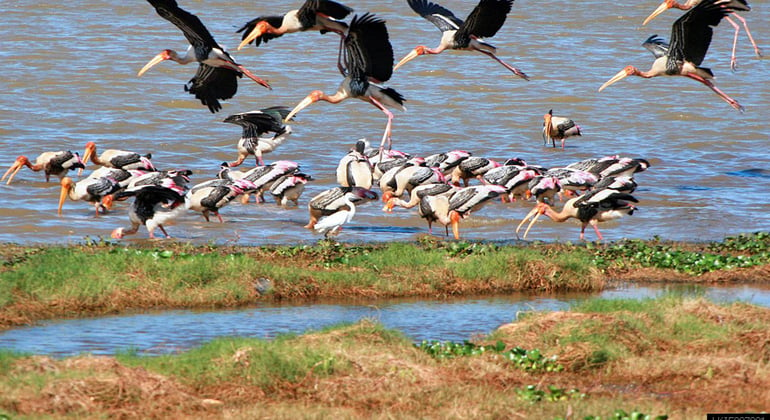Kumana National Park
Tourists are stimulated to enjoy ‘Kumana’ national park located in the south east edge of Sri Lanka as it proved to be fascinating. The park covers an area about 18149 hectares. The park is famous as a bird sanctuary. Rather than that it is an attractive eco tourism destination.
The painted stork, Indian darter, black headed Ibis are regular birds around Kumbuukan Oya. ‘Kumana Villu’ is fed by Kumbukkan Oya.
Thummulla wewa, Kudawila wewa and Kotalinda wewa are the most zest able water pools among birds. The most sighted birds like Lesser adjunt, Eurasian Spoonbil, Asian open bill, lesser whistling, weather rock, little egret, little cormorant, common moorhen and many more are migrated to the swamp.
Yellow footed green pigeon, malabar trogon, grey plover, common sandpiper, little stint, Ruddy turnstone, Greater racket tailed Drongo, Common snipe and pacific golden plover are some of the immigrated bird species. It is believed that birds like Pintail snipes are migrated to ‘Kumana’ from Siberia. Gradually the park is a favorable bird nesting and breeding ground. In months of May and June are the best breeding time periods for the birds.
Rather than that the Kumana National Park is fattened with mammals like leopards, herds of elephants, rusty spotted fishing cat and many more threatened species. The park is a great opportunity for Wild life enthusiasts and environmentalists to explore and observe our mother nature. The cool breeze will relax you and disappear your faint resulted from travelling.
Significantly Kumana National Park is a home to number of endangered wet land species like Mugger crocodiles, Olive ridly turtle, loggerhead turtle and Green turtle. The wetland areas are encompassed with dry zone tropical coarse bushes. Regarding the inland floral diversity Ehela, Burutha, nedun, kumbuk, palu and Weera trees can be identified. The travelers are encouraged to explore the park. In addition you can find a local guide to advent around the park.
Though it is a fine place to photography, travelers are indulged to capture wild life sceneries in distance. Please do not disturb the ecological patterns in the Kumana national park. Otherwise we couldn’t preserve this treasure for the next generation.
*Some of the content and images contained herein are the property of their original owners.













No comments: